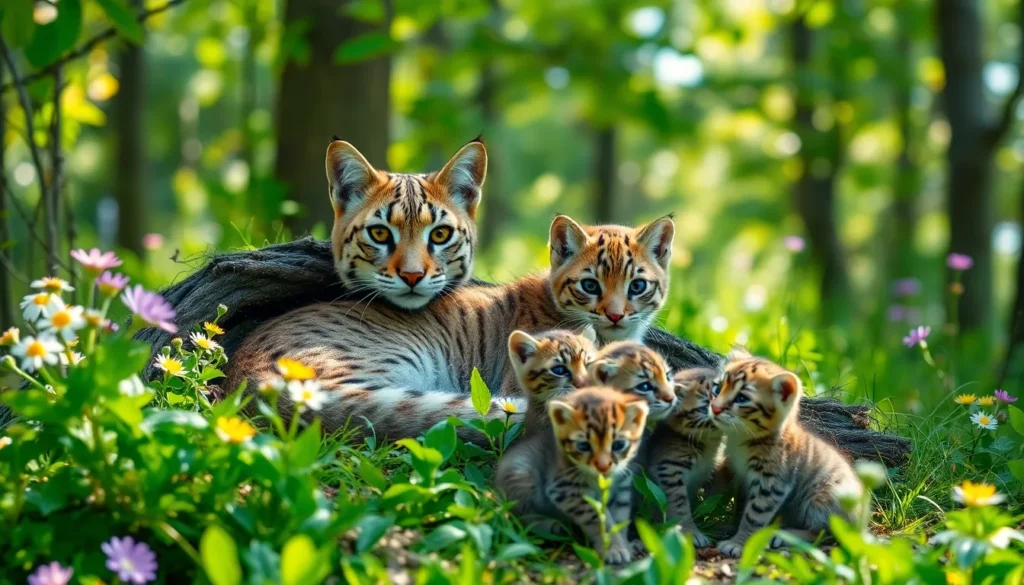Table of Contents
ToggleAh, bobcats. Those elusive, feline ninjas of the wild. They roam the forests and mountains across North America, prowling stealthily through their territories. But when it comes to starting a family, when do these beautiful creatures decide to embrace parenthood? In this text, we’ll unravel the captivating world of bobcat reproduction. So, grab your favorite beverage and buckle in, because it’s about to get wild.
Understanding Bobcat Breeding Season

Bobcats typically have their breeding season from late winter to early spring. This period can vary slightly depending on their geographical location. In warmer regions, breeding might begin as early as January, while in colder areas, it could extend into March. The peak mating activity generally occurs from February to March, when the days start to lengthen and the temperatures begin to rise. During this time, male bobcats become more vocal as they try to attract females, marking their territories with scent and calls. It’s a truly fascinating time, where nature’s matchmaking goes into full swing.
Bobcat Gestation Period
Once a female has successfully mated, she enters the gestation period, which lasts about 63 to 70 days. This window of time is critical as the embryos develop into cute little bobcat kittens. After a little over two months, the mother will find a safe, secluded den, perhaps in a hollow tree or a rocky crevice, to give birth. During this time, she won’t venture far from her nest. The anticipation builds, as both the mother and her surroundings prepare for the arrival of the next generation of bobcats. Talk about a cozy waiting period.
Ideal Conditions for Bobcat Reproduction
Bobcats thrive in diverse habitats, but some elements are vital for successful reproduction. A mix of dense cover for denning, a stable prey population, and minimal disturbances from humans or predators all contribute to their reproductive success. The presence of small mammals, like rabbits and rodents, is particularly important. They provide the necessary sustenance for nursing mothers. When bobcats have access to these ideal conditions, they’re much more likely to raise healthy, thriving litters.
Signs of Bobcat Pregnancy
Spotting a pregnant bobcat can be a bit tricky, as they continue their stealthy ways. But, there are subtle signs one might notice. Pregnant females may become more reclusive, choosing safer areas to hunt and forage. Also, they might kick their hunting habits into high gear, consuming more food to support their growing kits.
Caring for Kits: Bobcat Parenting Behavior
Parenting in the wild is no easy task, and bobcats are no exception. Once the kits are born, the mother dedicates herself wholeheartedly to their upbringing. She feeds them and keeps them safe from predators, only leaving them for short periods. As they grow, the mother teaches them essential survival skills. It’s a heartwarming sight, to see her guiding the little ones through the intricacies of hunting and exploring their surroundings.
Survival Rate of Bobcat Kittens
The reality is that the survival rate of bobcat kittens is relatively low compared to adults. Studies have shown that only about 50% of kittens survive their first few months. Factors such as predation, disease, and environmental challenges contribute to this statistic. Once they reach about six months old, their chances of survival significantly improve as they learn to fend for themselves and venture further from the nest. Nonetheless, the early stages of life are riddled with obstacles, a true testament to the harsh realities of nature.
Impact of Environment on Bobcat Reproduction
The environment plays a pivotal role in bobcat reproduction. Urbanization, habitat loss, and climate change can have detrimental effects on their populations. For instance, if an area becomes overdeveloped, bobcats may face challenges finding safe places to den, impacting their ability to reproduce. Also, changing weather patterns disrupt prey availability, posing additional stress to these wild cats. Conservation efforts are crucial to ensuring that bobcats can continue to thrive and reproduce successfully in their natural habitats.




